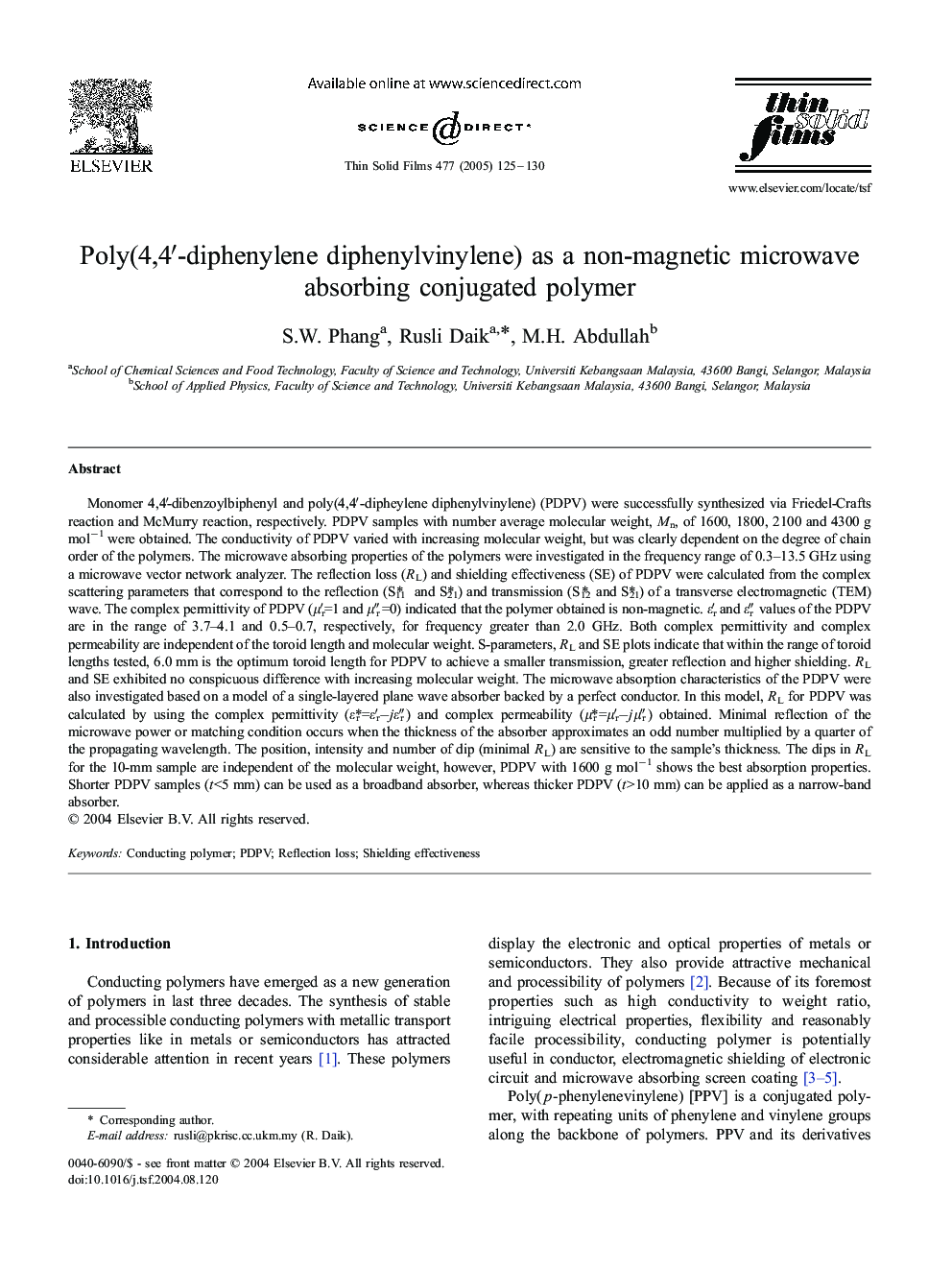| Article ID | Journal | Published Year | Pages | File Type |
|---|---|---|---|---|
| 9812850 | Thin Solid Films | 2005 | 6 Pages |
Abstract
Monomer 4,4â²-dibenzoylbiphenyl and poly(4,4â²-dipheylene diphenylvinylene) (PDPV) were successfully synthesized via Friedel-Crafts reaction and McMurry reaction, respectively. PDPV samples with number average molecular weight, Mn, of 1600, 1800, 2100 and 4300 g molâ1 were obtained. The conductivity of PDPV varied with increasing molecular weight, but was clearly dependent on the degree of chain order of the polymers. The microwave absorbing properties of the polymers were investigated in the frequency range of 0.3-13.5 GHz using a microwave vector network analyzer. The reflection loss (RL) and shielding effectiveness (SE) of PDPV were calculated from the complex scattering parameters that correspond to the reflection (S11* and S21*) and transmission (S12* and S21*) of a transverse electromagnetic (TEM) wave. The complex permittivity of PDPV (μrâ²=1 and μrâ³=0) indicated that the polymer obtained is non-magnetic. Érâ² and Érâ³ values of the PDPV are in the range of 3.7-4.1 and 0.5-0.7, respectively, for frequency greater than 2.0 GHz. Both complex permittivity and complex permeability are independent of the toroid length and molecular weight. S-parameters, RL and SE plots indicate that within the range of toroid lengths tested, 6.0 mm is the optimum toroid length for PDPV to achieve a smaller transmission, greater reflection and higher shielding. RL and SE exhibited no conspicuous difference with increasing molecular weight. The microwave absorption characteristics of the PDPV were also investigated based on a model of a single-layered plane wave absorber backed by a perfect conductor. In this model, RL for PDPV was calculated by using the complex permittivity (Ér*=Érâ²âjÉrâ³) and complex permeability (μr*=μrâ²âjμrâ³) obtained. Minimal reflection of the microwave power or matching condition occurs when the thickness of the absorber approximates an odd number multiplied by a quarter of the propagating wavelength. The position, intensity and number of dip (minimal RL) are sensitive to the sample's thickness. The dips in RL for the 10-mm sample are independent of the molecular weight, however, PDPV with 1600 g molâ1 shows the best absorption properties. Shorter PDPV samples (t<5 mm) can be used as a broadband absorber, whereas thicker PDPV (t>10 mm) can be applied as a narrow-band absorber.
Related Topics
Physical Sciences and Engineering
Materials Science
Nanotechnology
Authors
S.W. Phang, Rusli Daik, M.H. Abdullah,
